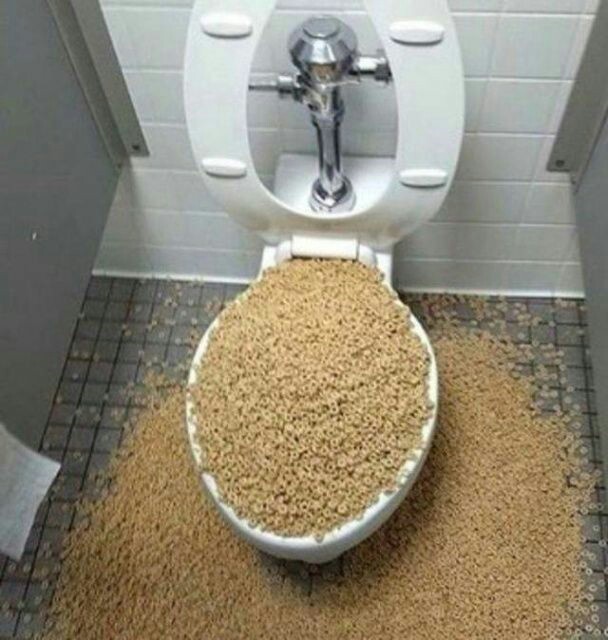Is it Suitable to Dispose of Food Down the Toilet?
Is it Suitable to Dispose of Food Down the Toilet?
Blog Article
The article below about Think Twice Before Flushing Food Down Your Toilet is highly insightful. Read it yourself and figure out what you think of it.

Intro
Many individuals are often confronted with the problem of what to do with food waste, especially when it comes to leftovers or scraps. One typical inquiry that occurs is whether it's alright to flush food down the bathroom. In this short article, we'll explore the reasons that people might think about purging food, the effects of doing so, and different techniques for appropriate disposal.
Reasons that individuals may think about flushing food
Absence of recognition
Some individuals might not understand the prospective harm brought on by flushing food down the commode. They may erroneously believe that it's a safe method.
Convenience
Purging food down the toilet might look like a fast and easy solution to taking care of undesirable scraps, specifically when there's no nearby trash bin available.
Idleness
In some cases, individuals may simply select to flush food out of sheer negligence, without considering the consequences of their activities.
Consequences of flushing food down the toilet
Ecological impact
Food waste that winds up in rivers can contribute to air pollution and harm water communities. In addition, the water used to flush food can stress water sources.
Pipes issues
Purging food can bring about clogged pipes and drains pipes, creating costly plumbing repair services and inconveniences.
Types of food that ought to not be flushed
Coarse foods
Foods with fibrous textures such as celery or corn husks can get tangled in pipes and trigger blockages.
Starchy foods
Starchy foods like pasta and rice can take in water and swell, causing obstructions in pipelines.
Oils and fats
Greasy foods like bacon or food preparation oils must never be flushed down the toilet as they can solidify and cause blockages.
Appropriate disposal methods for food waste
Utilizing a garbage disposal
For homes equipped with waste disposal unit, food scraps can be ground up and purged via the plumbing system. Nevertheless, not all foods appropriate for disposal in this fashion.
Recycling
Specific food packaging materials can be recycled, decreasing waste and reducing ecological effect.
Composting
Composting is an environment-friendly means to throw away food waste. Organic products can be composted and made use of to enhance dirt for gardening.
The relevance of appropriate waste monitoring
Decreasing ecological harm
Appropriate waste monitoring methods, such as composting and recycling, aid minimize contamination and preserve natural deposits for future generations.
Shielding plumbing systems
By preventing the method of flushing food down the commode, homeowners can prevent expensive plumbing repair services and preserve the integrity of their plumbing systems.
Conclusion
In conclusion, while it may be tempting to purge food down the commode for ease, it's important to understand the possible effects of this action. By adopting correct waste monitoring methods and throwing away food waste properly, people can contribute to healthier pipes systems and a cleaner environment for all.
FLUSH FOOD DOWN THE TOILET?
FLUSHING FOOD CAN CAUSE BLOCKED DRAINS IN YOUR HOME
All of the plumbing fixtures in your home are connected to the same sewer pipe outside of your home. This outdoor sewer pipe is responsible for transporting all the wastewater from your home to the Council sewer mains. Even small pieces of food that go down the kitchen sink can cause problems for your sewer. It should therefore be obvious that flushing larger bits of food, such as meat, risks a clog in either the toilet itself or the sewer pipes. Flushing greasy food is even more problematic because oil coagulates when it cools, coating the interior lining of your pipes.
THE TOILET IS NOT A BIN
Food isn’t the only thing that people shouldn’t be flushing down the toilet. People use the toilet to dispose of all kinds of things such as tampons, makeup wipes, dental floss, kitty litter and even underwear. Water goes to great lengths to educate residents about the high costs and stress placed on wastewater treatment systems simply from people flushing the wrong stuff down the toilet. It costs taxpayers millions of dollars each year, and homeowners thousands in blocked drain repairs.
FLUSHING FOOD IS A WASTE OF WATER
Flushing food is a waste of our most precious resource - water. In June this year Level 1 water restrictions were introduced to protect water supply from drought conditions. Much of New South Wales continues to be affected by prolonged drought with recent figures revealing up to 97 per cent of the state remains in drought. Depending on whether you have a single or dual flush toilet, every single flush uses between five and 11 litres of water. In the current climate this is a huge amount of water to be wasting on flushing food that should be placed in the bin (or better yet, the compost).
https://www.jabplumbingsolutions.com.au/blog/can-you-flush-food-down-the-toilet

As a devoted reader on Think Twice Before Flushing Food Down Your Toilet, I think sharing that excerpt was sensible. I beg you pause to share this blog post if you enjoyed it. Thank you for going through it.
Click Here Report this page